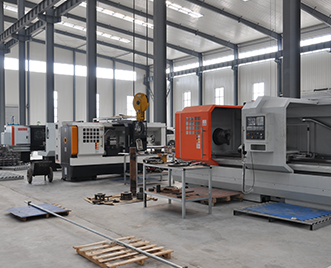Jul . 29, 2024 22:20 Back to list
Exploring the Efficiency and Applications of V6 Submersible Pump Technology for Various Industries
The V6 Submersible Pump A Comprehensive Overview
Submersible pumps have revolutionized the way we think about water management, industrial applications, and irrigation systems. Among these, the V6 submersible pump stands out due to its design, efficiency, and versatility. This article delves into the details of V6 submersible pumps, exploring their construction, applications, advantages, and maintenance.
Design and Construction
The V6 submersible pump, named for its six-inch diameter, is designed to work underwater. Its construction typically consists of a motor, impellers, diffusers, and a pump bowl. The motor is hermetically sealed to prevent water ingress, ensuring that it operates efficiently even when submerged. The impellers and diffusers are constructed from durable materials like stainless steel or high-quality plastics to withstand corrosive environments. This design allows the pump to push water to the surface without losing prime, offering reliable operation.
Applications
V6 submersible pumps find applications in various fields. They are frequently used in agriculture for irrigation purposes, allowing farmers to extract groundwater efficiently. These pumps are also commonly employed in municipal water supply systems, residential wells, and industrial applications such as dewatering and sewage handling. The ability to provide high flow rates with relatively low energy consumption makes the V6 pump a preferred choice for many users.
In addition to traditional uses, V6 submersible pumps are increasingly being implemented in renewable energy projects. For instance, they play a crucial role in geothermal energy extraction, where water must be pumped from deep underground to help generate heat. Their versatility makes them suitable for diverse environments, whether in residential neighborhoods, rural farms, or industrial sites.
Advantages
v6 submersible pump

One of the primary advantages of V6 submersible pumps is their energy efficiency. Designed to operate submerged, they utilize water's natural pressure to enhance their performance. This characteristic reduces the energy required for operation, thus lowering utility costs.
Additionally, V6 submersible pumps are designed for durability. Their robust construction allows them to withstand harsh conditions, including sand and sediment, which can quickly damage less durable pumps. This durability translates to longer service life and lower maintenance costs for users.
Another significant advantage is the reduced risk of cavitation, a common problem in surface pumps. Because V6 submersible pumps are positioned below the water surface, they minimize the chances of vapor pockets forming, which can erode impellers and lead to pump failure.
Maintenance
While V6 submersible pumps are designed for longevity, regular maintenance is crucial to ensure optimal performance. Users should monitor the pump’s operation, checking for unusual noises or vibrations that may indicate problems. Routine inspections of electrical components, seals, and pipe connections can prevent larger issues from developing.
Cleaning the pump every few years is also essential, especially in environments with high sediment levels. Sediment can clog the intake, reducing efficiency and increasing wear on the pump components. Annual maintenance by professionals can further enhance the pump’s lifespan and efficiency.
Conclusion
In summary, the V6 submersible pump is a pivotal component in modern water management and irrigation systems. Its design, robust construction, energy efficiency, and versatility make it an ideal choice for various applications, from agriculture to industrial uses. By understanding its features and maintaining it properly, users can ensure that their V6 submersible pump operates efficiently for years to come, ultimately contributing to sustainability and resource management in our increasingly water-conscious world.
-
Submersible Water Pump: The Efficient 'Power Pioneer' of the Underwater World
NewsJul.01,2025
-
Submersible Pond Pump: The Hidden Guardian of Water Landscape Ecology
NewsJul.01,2025
-
Stainless Well Pump: A Reliable and Durable Pumping Main Force
NewsJul.01,2025
-
Stainless Steel Submersible Pump: An Efficient and Versatile Tool for Underwater Operations
NewsJul.01,2025
-
Deep Well Submersible Pump: An Efficient 'Sucker' of Groundwater Sources
NewsJul.01,2025
-
Deep Water Well Pump: An Efficient 'Sucker' of Groundwater Sources
NewsJul.01,2025
-
 Submersible Water Pump: The Efficient 'Power Pioneer' of the Underwater WorldIn the field of hydraulic equipment, the Submersible Water Pump has become the core equipment for underwater operations and water resource transportation due to its unique design and excellent performance.Detail
Submersible Water Pump: The Efficient 'Power Pioneer' of the Underwater WorldIn the field of hydraulic equipment, the Submersible Water Pump has become the core equipment for underwater operations and water resource transportation due to its unique design and excellent performance.Detail -
 Submersible Pond Pump: The Hidden Guardian of Water Landscape EcologyIn courtyard landscapes, ecological ponds, and even small-scale water conservancy projects, there is a silent yet indispensable equipment - the Submersible Pond Pump.Detail
Submersible Pond Pump: The Hidden Guardian of Water Landscape EcologyIn courtyard landscapes, ecological ponds, and even small-scale water conservancy projects, there is a silent yet indispensable equipment - the Submersible Pond Pump.Detail -
 Stainless Well Pump: A Reliable and Durable Pumping Main ForceIn the field of water resource transportation, Stainless Well Pump has become the core equipment for various pumping scenarios with its excellent performance and reliable quality.Detail
Stainless Well Pump: A Reliable and Durable Pumping Main ForceIn the field of water resource transportation, Stainless Well Pump has become the core equipment for various pumping scenarios with its excellent performance and reliable quality.Detail
